FreightWaves Classics is sponsored by Sutton Transport, an LTL leader in the Midwest for more than 40 years. Sutton Transport proudly services Illinois, Minnesota, Missouri and Wisconsin. Request a quote here.
Fifty years ago — specifically Saturday night, Nov. 13, 1971 — the thriller “Duel” first aired on ABC as its movie of the week. It was the full-length debut from a then-promising director named Steven Spielberg. And one of the starring roles belonged to a truck driver.
Actually, it was the truck itself serving as the antagonist. Specifically, a 1955 Peterbilt 281 “Needlenose” tanker truck with a butterfly hood flanked by two headlights resting just above the bumper. The trucker, meanwhile, was never identified.
The plot was simple yet intriguing. Salesman David Mann (played by Dennis Weaver), driving cross-country in his Plymouth Valiant, inadvertently finds himself playing a life-threatening game of cat and mouse with the menacing truck and its faceless driver.
Spielberg once described the plot as a “primal road rage story. You’re watching a lightweight go up against a heavyweight champion. Like David and Goliath, at first you put your money on the giant and it turns out that David starts to turn the tables.”
Sounds a lot like a movie he would release four years later as he traded a desolate stretch of highway for the open seas. But more on that later.
To celebrate the 50th anniversary of “Duel,” here are five things you should know.
It was based on a true story
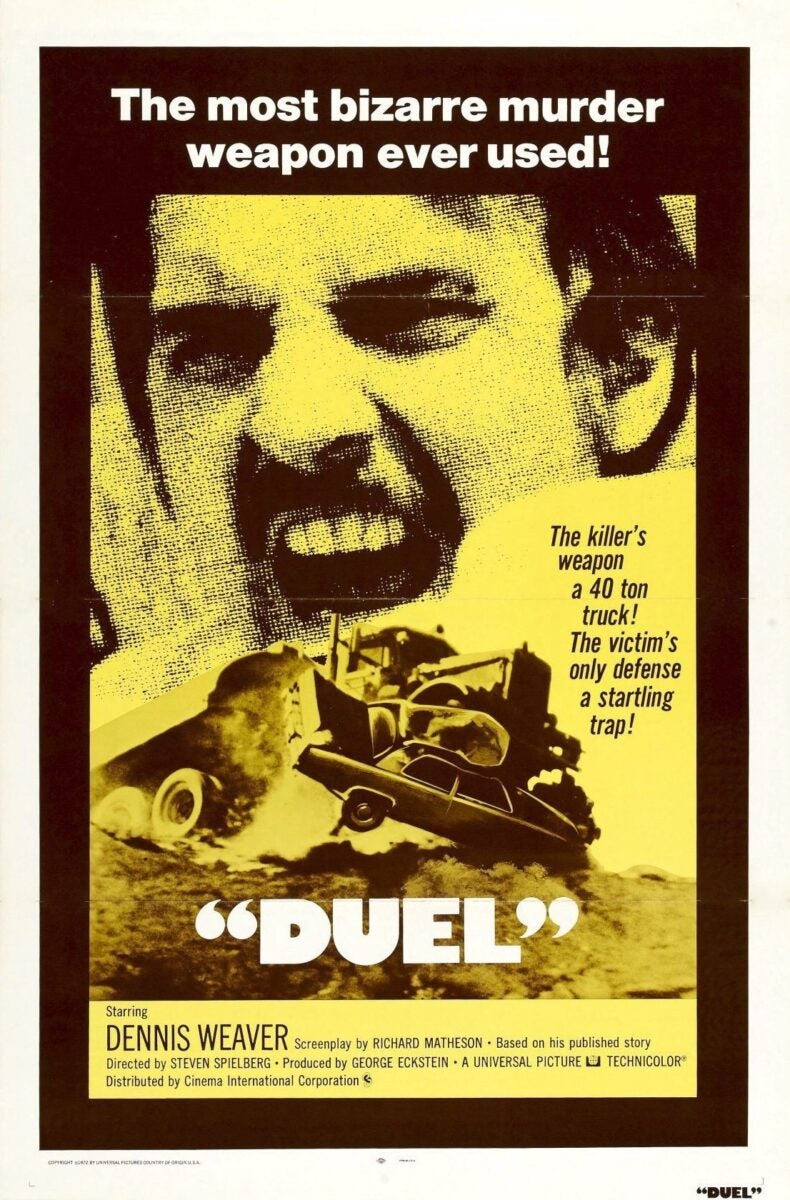
Richard Matheson, who wrote the short story that the movie was based on, said the idea for “Duel” came to him on Nov. 22, 1963 — the day President John F. Kennedy was assassinated.
“A friend and I were playing golf … and when we came in for lunch, we heard about the assassination and we were so distressed by the news that of course we forgot about the golf game and started going home,” Matheson recalled in a YouTube interview.
“As we were going through this narrow pass on the way back home, this huge truck started tailgating us. We went faster and faster. He went faster and faster. We were screaming out the windows with as much fury about the assassination as about him trying to kill us.
“Finally, my friend pulled off into a dirt siding and his car spun around and this truck went flying past. We were really shaken up by it.
“But having the true writer’s mind, within a few moments I thought, ‘Ah, man gets chased by a truck.’”
Spielberg read the story in Playboy
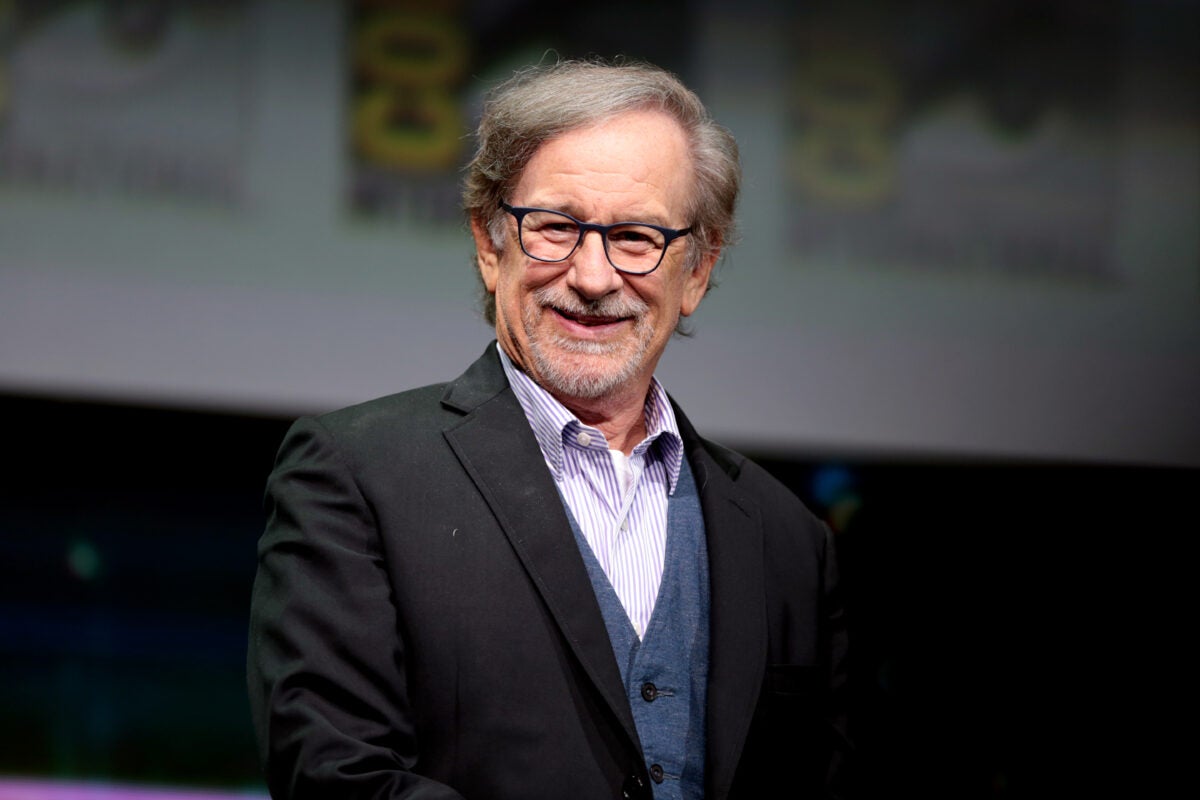
Spielberg said his secretary had read Matheson’s story in Playboy and thought it might be worth turning into a screenplay.
“I think this is right up your alley,” she told her boss as she handed him the magazine.
“It was one of the few times I ever picked up Playboy without looking at the pictures,” Spielberg recalled during an interview with Empire.
Truck auditions
According to Mental Floss and other sources, Spielberg considered seven styles of semi-trucks. He opted for the Peterbilt 281 because he “felt that the split windshield, rounded lights and elongated hood represented the menacing features of the truck’s ‘face.’”
That “face” was treated just like Weaver’s, especially in the makeup room.
Priscilla Page, writing for Hagerty, had this snippet: “Every day, Dennis Weaver would sit in his makeup chair, and so would the truck: about seven or eight people ‘with large brushes and mops’ would spatter it and make it ‘look really grisly and horrible. It was the same kind of makeup you would do on ‘Frankenstein’ or ‘The Wolf Man’ or the ‘Phantom of the Opera.’ It had to have personality, and it had to look like a serial killer, ‘a veteran of these road crimes.'”
The 1955 truck (spoiler alert just in case 50 years isn’t long enough) did not survive the ending of the movie, but its backup, a 1960 Peterbilt, was never used.
When the movie was expanded by 16 minutes for its theatrical release, two more trucks were acquired, this time Peterbilt 351s. One was destroyed; the other was never used for “Duel,” although it appeared on at least one TV show.
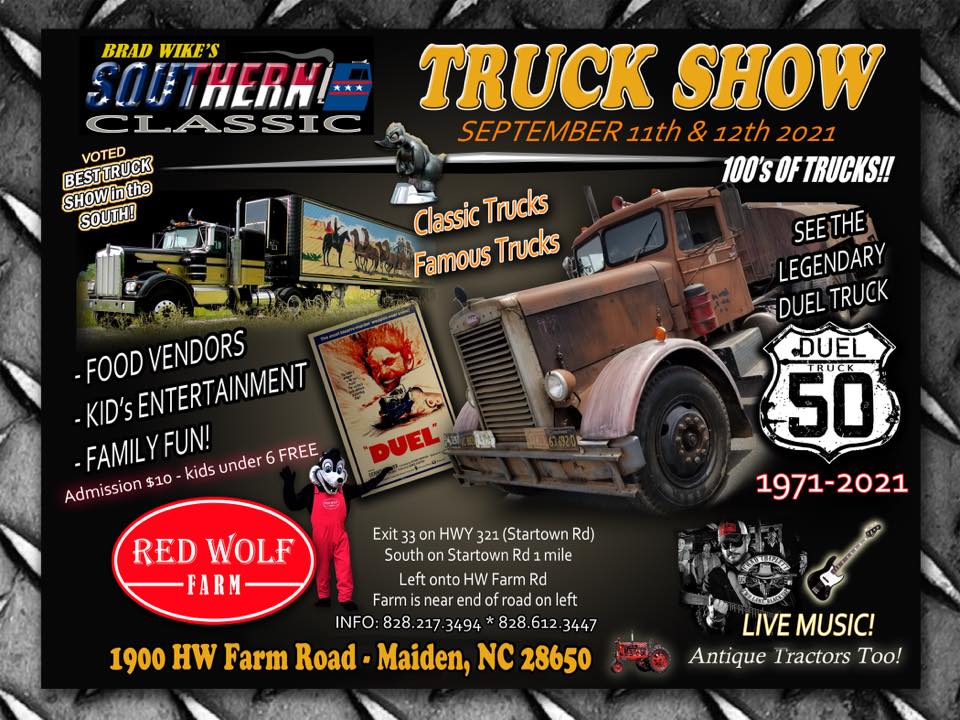
Truck collector Brad Wike owns one of the existing “Duel” trucks, having purchased it from a friend. “Couldn’t really afford it, but I bought it anyway,” Wike told “The Aficionauto.”
He said he had always been fascinated by the truck after seeing “Duel” on ABC that night 50 years ago.
“I remember that movie when I was a kid,” Wike said. “I watched that movie; it came on like Saturday TV or something. I remember thinking that’s a Peterbilt. It was really the highlight of the show to me even though it was just ugly.”
The truck remains one of the most popular objects among attendees at his truck shows.
The truck driver did have a name
It wasn’t mentioned in the movie, but Matheson did reference the trucker’s name in his short story. The passage reads:
As he neared the truck, he tensed, anticipating that the driver might block his way. But the truck did not shift from the westbound lane. Mann’s car moved along its mammoth side. He glanced at the cab and saw the name Keller printed on its door. For a shocking instant, he thought it read killer and started to slow down.
As for the actor who played the truck driver? His name was Carey Loftin, a veteran Hollywood stunt driver who also drove trucks in the series of “Smokey and the Bandit” movies and the film, “Over the Top” in which Sylvester Stallone plays a truck driver turned competitive arm wrestler.
Despite his ability behind the wheel, Loftin probably was more accomplished while gripping motorcycle handles. He’s in the American Motorcycle Association Hall of Fame, inducted posthumously in 2001.
‘Duel’ led to ‘Jaws’
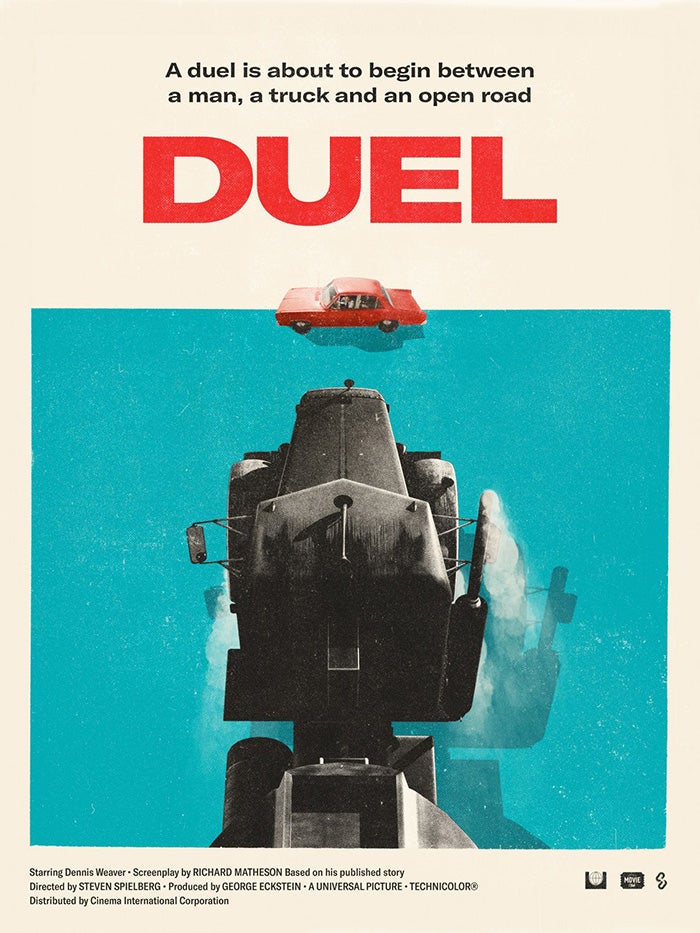
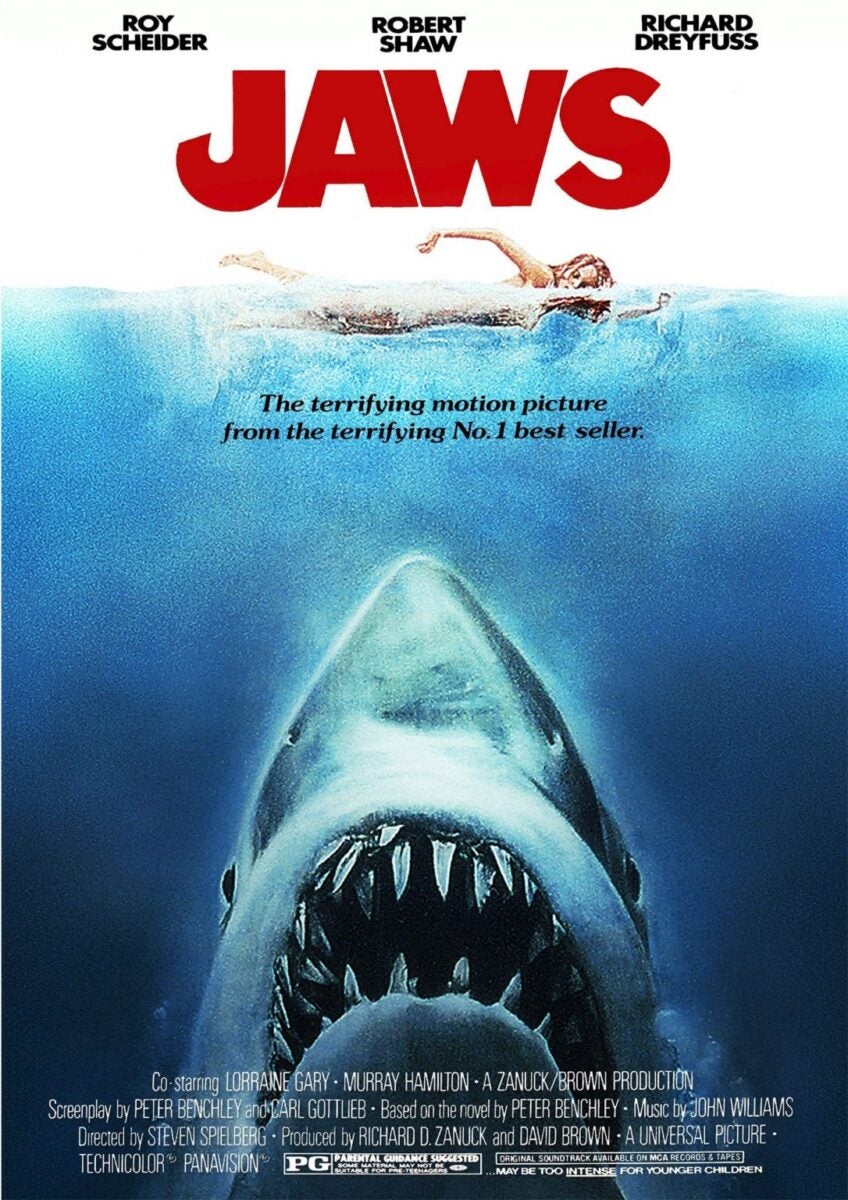
Spielberg’s first blockbuster movie came in 1975 with “Jaws,” which won three Academy Awards and was nominated for best picture. The parallels with “Duel” are easy to see. The Peterbilt truck was basically the precursor to the shark in “Jaws.”
In a blog post for The Daily Jaws, Dean Newman writes: “Both are taut thrillers that still showcase some of the finest thrills Steven Spielberg has ever delivered as director.
“Although he was worried about the similar themes, both have become intrinsically weaved, with ‘Duel’ acting as a proto-‘Jaws,’ a sublime dress rehearsal for Quint, Hooper and Brady’s battle against a great white shark.
“Initially, Spielberg was worried that the beast (metal truck and monster shark) against man similarities of ‘Duel’ and ‘Jaws’ would see him labeled as ‘that shark-and-truck director.’ He needn’t have worried.
“With hindsight, it is easy to see how Spielberg initially saw ‘Jaws’ as a throwback to ground he had already covered in the well-received ‘Duel.’”
Spielberg himself said that “Duel” put him in position to make “Jaws.”
“I was conscious of that when I put myself up for the job to direct ‘Jaws,’” Spielberg said in his interview with Empire. “I told [producers] David Brown and Dick Zanuck, ‘Please watch ‘Duel,’ because ‘Duel’ is basically ‘Jaws’ on land.’ I really think it qualified me to direct ‘Jaws.’”
Spielberg added that he was drawn to the theme of both movies because of his own childhood experiences of facing the school bully.
“I look back at ‘Duel’ and to some extent ‘Jaws’ and say that some of my earlier films were either about my fear of going to school because there were big kids who would go after me and would make my life a ruin,” he said.
In the end, of course, David beats Goliath in both movies. And in one last nod to “Duel,” Spielberg used the same creaking, gasping sound effect in both movies to signal the defeat of the monster.
“Not only is it a similar sound, it’s the same sound,” Spielberg revealed to Empire. “I asked the sound effects editor on ‘Jaws’ to go into the library and find the death rattle of the truck of ‘Duel’ and put it underwater with the shark and he did.”
No doubt Spielberg’s fondness for his first major movie remains.
“I love that after all these years, there’s still air in those tires,” he told Empire. “The truck, the car and me.”








Gary Smith
Never cared for the movie. Arguably the worst movie ever made for the image of truckers.